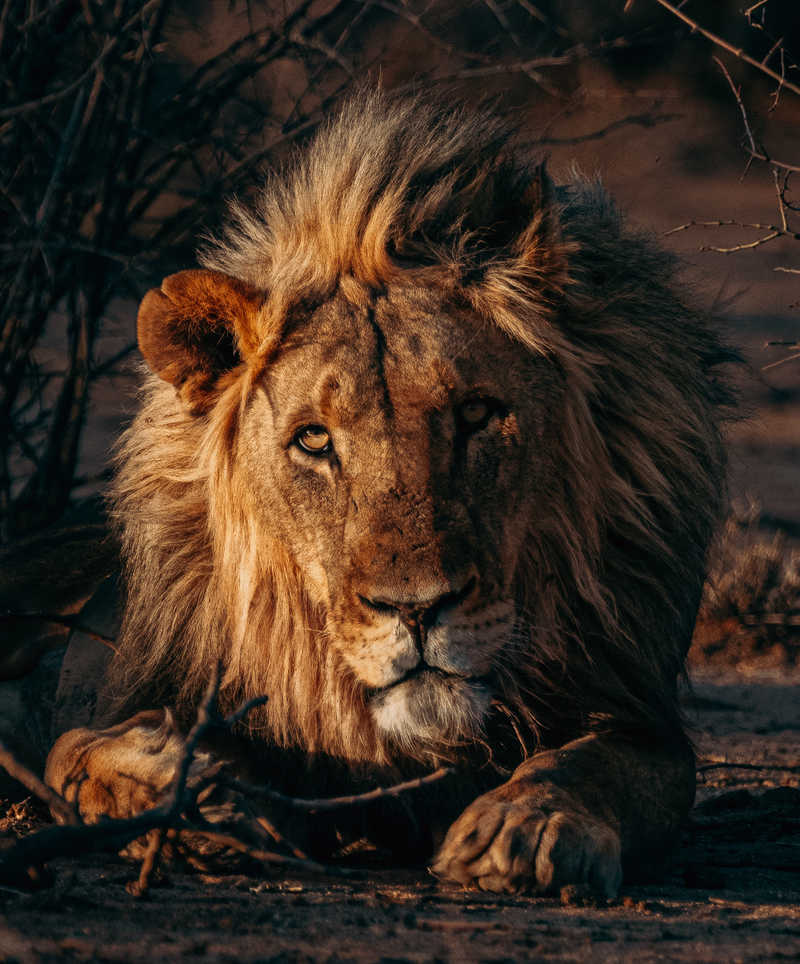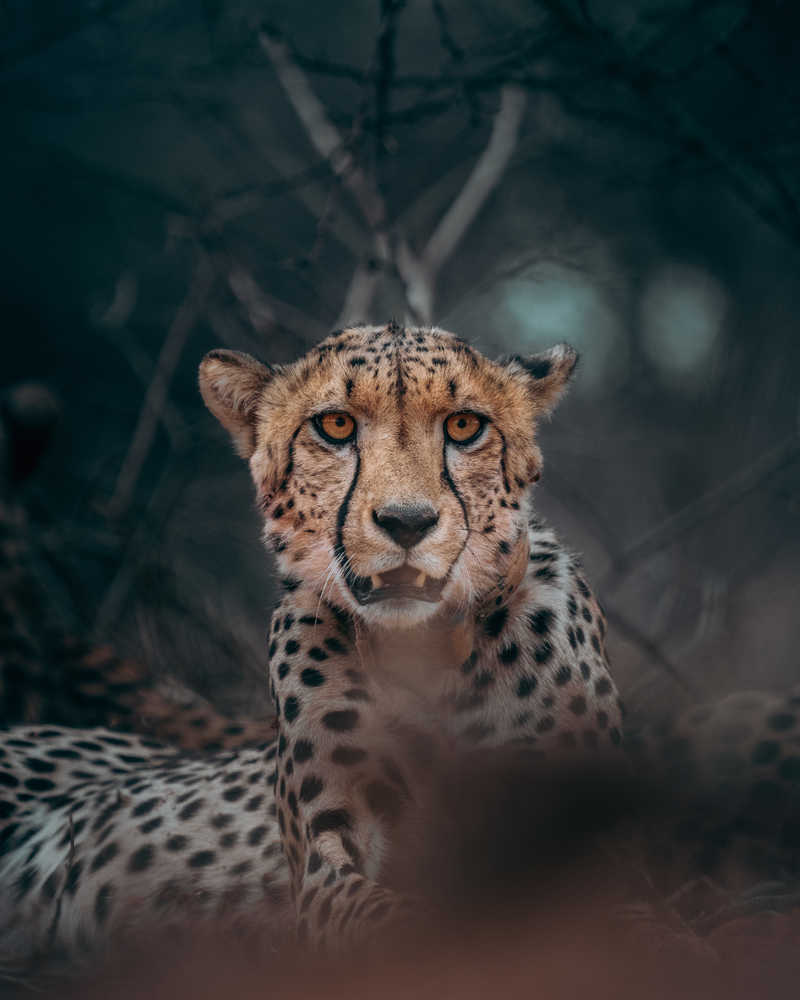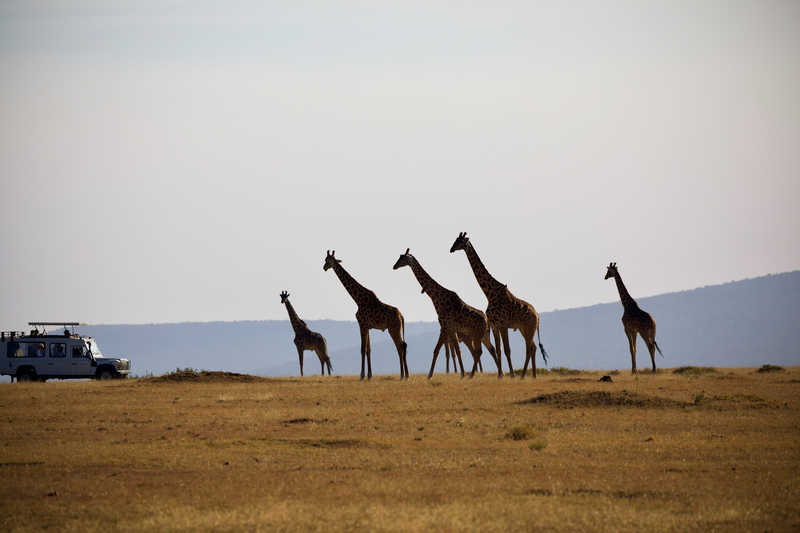Kilimanjaro Machame Route
- Kandoo Summits
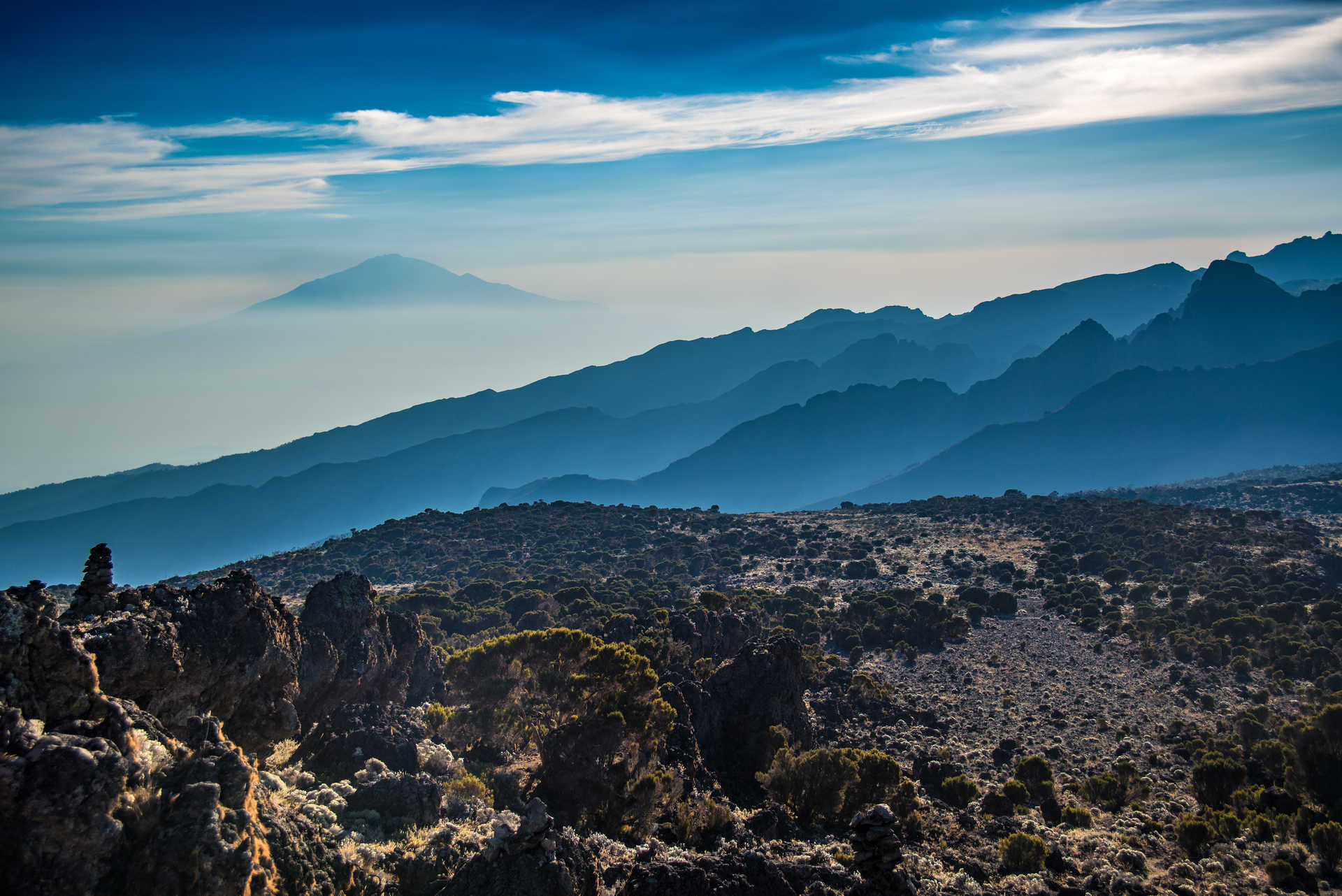
Contact
our UK team
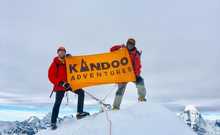
All trekkers need to organise their own flights to Kilimanjaro International Airport (JRO). From JRO we will arrange a private transfer to your hotel. That night or early the next morning you will meet your local Kandoo representative and have a full pre-climb briefing.
Transfer from your hotel to Machame Gate for registration. Our porters prepare and pack our supplies and luggage before we start our ascent along the forest trail to Machame Camp at 3000m. We will stay here overnight.
After breakfast we start walking, leaving the rainforest behind, and continue our ascent, crossing a small valley and up to a steep rocky ridge, covered with heather. Our route now turns west into a river gorge until we reach Shira Cave Camp. It will be colder tonight than the previous night with temperatures possibly falling below freezing.
Today we will climb up to 4600m to the base of the Lava Tower for lunch and acclimatisation. This will be our toughest day so far and you may, for the first time, feel the altitude. After lunch we will descend again by almost 650m to Barranco Camp, following the ‘walk high, sleep low’ golden rue of acclimatisation. Our descent to Barranco Camp takes about 2 hours and offers great opportunities to take some beautiful photographs of the Western Breach and Breach Wall. The camp is situated in a valley below the Breach and Great Barranco Wall.
A short, but fun, day starting with a scramble to the top of the Great Barranco Wall. We then traverse over scree to the Karanga Valley (3930m) beneath the icefalls of the Heim, Kersten and Decken Glaciers. We will stay overnight at Karanga campsite.
We leave Karanga campsite behind to meet the junction connecting with the Mweka descent trail. From here we continue up to Barafu Camp. Here we can rest, enjoy dinner, and prepare for the summit day. The camp offers amazing views of the summit and the two peaks of Mawenzi and Kibo.
You will be woken around 23:30 with tea and biscuits. We start our trek to the summit between the Rebman and Ratzel glaciers through heavy scree up to Stella Point on the crater rim. This is the most mentally and physically challenging part of the trek. At Stella Point (5732m), we will stop for a short rest and hopefully be in time to witness the magnificent sunrise (weather permitting). We are now only an hour away from the summit, Uhuru Peak (5895m), the highest point on Mount Kilimanjaro and the continent of Africa. From the summit, we descend down to Mweka camp site, via Barafu Camp for lunch. Trekking poles will be needed for the loose scree going down to Mweka Camp (3100m). Later in the evening, we will enjoy our last dinner on the mountain and a well-earned sleep.
Your final day on the trek, departing after breakfast we descend a further 1300m to the Mweka Park Gate to pick up your summit certificates from the Park Headquarters. Transfer to your hotel.
After a much needed nights rest, we will bid you goodbye. If you have arranged airport transfers with us or a safari / Zanzibar trip, we will collect you in the morning for your onward journey.
The Machame Route is one of our more popular routes on Kilimanjaro, but is still considered to be challenging. You will ascend the Barranco Wall as part of the climb and move steeply over loose ground on summit night. Rest assured that the Barranco Wall is just a short scramble that is really not that tricky - you will be helped by your guide every step of the way. One stride around a rock outcrop is the most precarious part you will experience. Thousands of climbers safely travel this route each year, let alone the Kilimanjaro porters carrying heavy loads. For the summit ascent, you will need to be prepared for a whopping 12-15 hours on your feet! Climbing up for 6-8 hours and descending back down for 6-7 hours. Arriving in great physical condition and with a tough mental "Kandoo" attitude will be your key to success!
For the rest of the days, you should expect to be trekking for 6-7 hours nearly every day. There is no technical climbing required on this route, but a good level of fitness is recommended.
BREAKFAST
Breakfast
is usually fairly hearty, and includes porridge, sausage, eggs and toast with
marmalade or jam. Of course, you’ll also have hot drinks, generally a choice of
tea, coffee or hot chocolate. Let your guide know if you are still hungry, or
even if you think you could ‘pack in a few more bites’. Our cooks always try to
provide more food than necessary to ensure everyone gets a good meal.
LUNCH
Lunch is
either packed for you, to carry in your rucksack, or we stop for a hot cooked
lunch depending on your itinerary. A typical packed lunch is a boiled egg,
sandwiches, a portion of chicken, crisps, snack bar, fresh fruit and a drink.
AFTERNOON TEA
Afternoon
Tea is served at the end of the day’s walking, once you get to camp. In
addition to tea and other hot drinks, there are plenty of peanuts, popcorn, biscuits
and snacks to help restore some of the energy you’ve just burned off.
DINNER
Dinners
are designed to be filling. They usually begin with a nice hearty soup, and then a main
course such as chicken curry, spaghetti bolognese, fresh vegetables, and plenty
of rice, pasta or potatoes, followed by a yummy dessert such as pancakes or
banana fritters with maple syrup or nutella!
We use only the very best high
altitude mountain tents, Mountain Hardwear Trango 3, to ensure you stay warm,
dry and comfortable on your Kilimanjaro climb. Please bear in mind, these are
proper mountain tents, designed to cope with extreme conditions so don’t expect
to be able to stand up and walk around inside! The dry, dusty conditions on
Kilimanjaro can play havoc with the zips and they can easily jam. Our guides
are armed with WD-40 so just ask them for assistance, rather than trying to
force the zip.
Your meals will be taken in a
separate mess tent where you will be able to sit comfortably, while you relax
and chat to your team mates and enjoy the wholesome food that our cook has
freshly prepared for you. Inside, you’ll be pleased to find a table (of course)
and a proper, comfortable chair with arms. With a full 2 metres of headroom,
even the tallest climbers will be able to stretch a bit, and move about without
hunching over. They are fully waterproof, and regularly withstand the worst
weather Kilimanjaro has to offer. A toilet tent is also provided with toilet
paper.
CLIMBING BAG WEIGHT
On 1st
June 2019, Tanzania introduced a ban on all single-use plastic bags. Please support this fight against plastic by
using more sustainable alternatives in your luggage, such as packing cubes and
dry bags. Passengers with plastic bags in their luggage may be asked to
surrender them on arrival at the airport.
The zip-lock bags required to carry
liquids and toiletries in cabin baggage on airplanes will still be permitted.
It is a requirement of joining any of our climbs that you attend a
pre-climb briefing the day before the climb begins. This gives our guide team
the opportunity to review the plans for the climb with you, make sure you have
all the right gear, arrange any equipment rental and answer any questions you
may have. Please ensure that you bring your passport to the briefing, as your
guide will need to collate the details required for registration at the park
gate. We will also carry out a pre-climb health check which must be completed
before you trek to high altitude. The briefing in Moshi is held at 4pm the evening before
the climb begins, and we strongly recommend that you book a flight that arrives
in Kilimanjaro in time for you to attend the briefing.
If you should arrive on a late evening flight or have been on safari,
then you will need to get up early so the guide can brief you in the morning
before you set off for the mountain.
Please take some time to read our Kilimanjaro Training Guide which is full of helpful tips on how to get physically prepared for your climb.
Please note that not all hotels can accept
card payments so you may need to use an ATM to access funds.
Although Tanzanian law now requires all local payments to be made in Tanzanian Shillings, for your tips you still have the choice to pay in US Dollars or Tanzanian Shillings.
You may also find on your summit
attempt that some of the porters accompany the group to provide additional
assistance. This is an additional task that they carry out in order to support
you having the best chance of reaching the summit. Please show your
appreciation for any help you receive by tipping these porters directly. We
would suggest an extra tip of $20.
The tipping announcement will take place
on the last night on the mountain when all the crew will gather together to
celebrate with you. One representative from your group should say a few words
of thanks, which will be translated by the lead guide into kiSwahili.
Due to recent thefts on Kilimanjaro, we
no longer advise our clients to carry cash with them during the climb, so the
actual tip money will be presented when you return to your hotel. Your group
will be supplied with envelopes to assist with the distribution of tips – one
envelope for the porters and a separate envelope that you can use to tip your
lead guide, assistant guides and cook. Three porter representatives will come
to the hotel to accept the tip envelope on behalf of all the porters, and they will
distribute the money themselves.
RENTAL EQUIPMENT
If you’ve
decided to rent gear, then below is a list of equipment available. Just let our
team know what you’d like to hire at your Pre-Climb Briefing. All payments can be made locally in Tanzanian Shillings or by card.
UPPER
BODY
FEET
| From | To | Price | Availability | Book | Enquire |
|---|---|---|---|---|---|
| 16/01/2026 | 24/01/2026 |
£2,099
|
Guaranteed
|
Book now | Enquire now |
| 14/02/2026 | 22/02/2026 |
£2,099
|
Available
|
Book now | Enquire now |
| 20/02/2026 | 28/02/2026 |
£2,099
|
Available
|
Book now | Enquire now |
| 27/02/2026 | 07/03/2026 |
£2,099
|
Available
|
Book now | Enquire now |
| 06/03/2026 | 14/03/2026 |
£2,099
|
Available
|
Book now | Enquire now |
| 14/03/2026 | 22/03/2026 |
£2,099
|
Guaranteed
|
Book now | Enquire now |
| 05/06/2026 | 13/06/2026 |
£2,099
|
Guaranteed
|
Book now | Enquire now |
| 12/06/2026 | 20/06/2026 |
£2,099
|
Available
|
Book now | Enquire now |
| 19/06/2026 | 27/06/2026 |
£2,099
|
Available
|
Book now | Enquire now |
| 26/06/2026 | 04/07/2026 |
£2,099
|
Available
|
Book now | Enquire now |
| 03/07/2026 | 11/07/2026 |
£2,099
|
Available
|
Book now | Enquire now |
| 10/07/2026 | 18/07/2026 |
£2,099
|
Available
|
Book now | Enquire now |
| 17/07/2026 | 25/07/2026 |
£2,099
|
Guaranteed
|
Book now | Enquire now |
| 23/07/2026 | 31/07/2026 |
£2,099
|
Available
|
Book now | Enquire now |
| 31/07/2026 | 08/08/2026 |
£2,099
|
Available
|
Book now | Enquire now |
| 07/08/2026 | 15/08/2026 |
£2,099
|
Available
|
Book now | Enquire now |
| 14/08/2026 | 22/08/2026 |
£2,099
|
Guaranteed
|
Book now | Enquire now |
| 28/08/2026 | 05/09/2026 |
£2,099
|
Available
|
Book now | Enquire now |
| 04/09/2026 | 12/09/2026 |
£2,099
|
Available
|
Book now | Enquire now |
| 11/09/2026 | 19/09/2026 |
£2,099
|
Guaranteed
|
Book now | Enquire now |
| 20/09/2026 | 28/09/2026 |
£2,099
|
Available
|
Book now | Enquire now |
| 25/09/2026 | 03/10/2026 |
£2,099
|
Available
|
Book now | Enquire now |
| 01/10/2026 | 09/10/2026 |
£2,099
|
Available
|
Book now | Enquire now |
| 16/10/2026 | 24/10/2026 |
£2,099
|
Available
|
Book now | Enquire now |
| 04/12/2026 | 12/12/2026 |
£2,099
|
Available
|
Book now | Enquire now |
| 19/12/2026 | 27/12/2026 |
£2,099
|
Available
|
Book now | Enquire now |
| 01/01/2027 | 09/01/2027 |
£2,099
|
Available
|
Book now | Enquire now |
| 15/01/2027 | 23/01/2027 |
£2,099
|
Available
|
Book now | Enquire now |
| 22/01/2027 | 30/01/2027 |
£2,099
|
Available
|
Book now | Enquire now |
| 05/02/2027 | 13/02/2027 |
£2,099
|
Guaranteed
|
Book now | Enquire now |
| 12/02/2027 | 20/02/2027 |
£2,099
|
Available
|
Book now | Enquire now |
| 19/02/2027 | 27/02/2027 |
£2,099
|
Available
|
Book now | Enquire now |
| 26/02/2027 | 06/03/2027 |
£2,099
|
Available
|
Book now | Enquire now |
| 05/03/2027 | 13/03/2027 |
£2,099
|
Available
|
Book now | Enquire now |
| 16/03/2027 | 24/03/2027 |
£2,099
|
Available
|
Book now | Enquire now |
| 26/03/2027 | 03/04/2027 |
£2,099
|
Available
|
Book now | Enquire now |
| 04/06/2027 | 12/06/2027 |
£2,099
|
Available
|
Book now | Enquire now |
| 11/06/2027 | 19/06/2027 |
£2,099
|
Available
|
Book now | Enquire now |
| 18/06/2027 | 26/06/2027 |
£2,099
|
Available
|
Book now | Enquire now |
| 25/06/2027 | 03/07/2027 |
£2,099
|
Available
|
Book now | Enquire now |
| 02/07/2027 | 10/07/2027 |
£2,099
|
Available
|
Book now | Enquire now |
| 12/07/2027 | 20/07/2027 |
£2,099
|
Available
|
Book now | Enquire now |
| 19/07/2027 | 27/07/2027 |
£2,099
|
Available
|
Book now | Enquire now |
| 23/07/2027 | 31/07/2027 |
£2,099
|
Available
|
Book now | Enquire now |
| 30/07/2027 | 07/08/2027 |
£2,099
|
Available
|
Book now | Enquire now |
| 06/08/2027 | 14/08/2027 |
£2,099
|
Available
|
Book now | Enquire now |
| 13/08/2027 | 21/08/2027 |
£2,099
|
Available
|
Book now | Enquire now |
| 27/08/2027 | 04/09/2027 |
£2,099
|
Available
|
Book now | Enquire now |
| 03/09/2027 | 11/09/2027 |
£2,099
|
Guaranteed
|
Book now | Enquire now |
| 10/09/2027 | 18/09/2027 |
£2,099
|
Available
|
Book now | Enquire now |
| 17/09/2027 | 25/09/2027 |
£2,099
|
Available
|
Book now | Enquire now |
| 24/09/2027 | 02/10/2027 |
£2,099
|
Available
|
Book now | Enquire now |
| 01/10/2027 | 09/10/2027 |
£2,099
|
Available
|
Book now | Enquire now |
| 08/10/2027 | 16/10/2027 |
£2,099
|
Available
|
Book now | Enquire now |
| 15/10/2027 | 23/10/2027 |
£2,099
|
Available
|
Book now | Enquire now |
| 03/12/2027 | 11/12/2027 |
£2,099
|
Available
|
Book now | Enquire now |
| 19/12/2027 | 27/12/2027 |
£2,099
|
Available
|
Book now | Enquire now |
Want to ask us a question or book a private trip? Don't hesitate to contact us!
Contact us